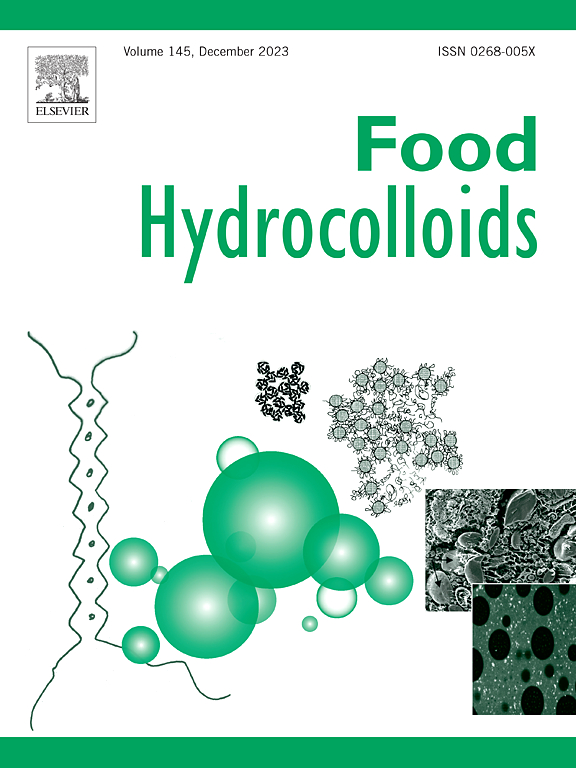Interfacial and oil-in-water emulsifying properties of ovalbumin enriched in amyloid-like fibrils and peptides
IF 11
1区 农林科学
Q1 CHEMISTRY, APPLIED
引用次数: 0
Abstract
The combination of heat and enzymatic treatment on ovalbumin (OVA) has been shown to lead to a mixture of amyloid-like fibrils (ALFs) and peptides. Due to their gelling behavior, these mixtures are able to stabilize oil-in-water (O/W) emulsions. As peptides present alongside the OVA ALFs can impact interfacial behavior, it is necessary to remove them. Here, the ability to separate peptides from OVA ALFs by ultracentrifugation and dialysis was investigated. Size exclusion-high performance liquid chromatography results showed that dialysis produced pure OVA ALFs, while ultracentrifugation resulted in both a fibril- and a peptide-enriched fraction. Drop shape tensiometry confirmed that dialysis removed peptides, as a delayed decrease in interfacial tension indicated slower adsorption kinetics of larger structures. This was further supported by an increase in dilatational elasticity compared to samples containing peptides. Emulsions [10.0 % (O/W)] with only fibrils (obtained by dialysis) contained oil droplets that were noticeably larger than those in emulsions containing peptides. However, these emulsions exhibited high creaming and coalescence stability. In contrast, emulsions with peptide-enriched OVA dispersions contained smaller oil droplets but were prone to coalescence due to the lack of a thick viscoelastic layer or a highly viscous continuous phase. The obtained results suggest that peptides, when present, preferentially adsorb at the interface, favoring small emulsion droplets, while the long OVA ALFs form a gel-like network in the continuous phase. This distinct interfacial behavior of peptides and ALFs, in the presence or absence of each other, may be useful when considering their use in food products.

求助全文
约1分钟内获得全文
求助全文
来源期刊

Food Hydrocolloids
工程技术-食品科技
CiteScore
19.90
自引率
14.00%
发文量
871
审稿时长
37 days
期刊介绍:
Food Hydrocolloids publishes original and innovative research focused on the characterization, functional properties, and applications of hydrocolloid materials used in food products. These hydrocolloids, defined as polysaccharides and proteins of commercial importance, are added to control aspects such as texture, stability, rheology, and sensory properties. The research's primary emphasis should be on the hydrocolloids themselves, with thorough descriptions of their source, nature, and physicochemical characteristics. Manuscripts are expected to clearly outline specific aims and objectives, include a fundamental discussion of research findings at the molecular level, and address the significance of the results. Studies on hydrocolloids in complex formulations should concentrate on their overall properties and mechanisms of action, while simple formulation development studies may not be considered for publication.
The main areas of interest are:
-Chemical and physicochemical characterisation
Thermal properties including glass transitions and conformational changes-
Rheological properties including viscosity, viscoelastic properties and gelation behaviour-
The influence on organoleptic properties-
Interfacial properties including stabilisation of dispersions, emulsions and foams-
Film forming properties with application to edible films and active packaging-
Encapsulation and controlled release of active compounds-
The influence on health including their role as dietary fibre-
Manipulation of hydrocolloid structure and functionality through chemical, biochemical and physical processes-
New hydrocolloids and hydrocolloid sources of commercial potential.
The Journal also publishes Review articles that provide an overview of the latest developments in topics of specific interest to researchers in this field of activity.
 求助内容:
求助内容: 应助结果提醒方式:
应助结果提醒方式:


